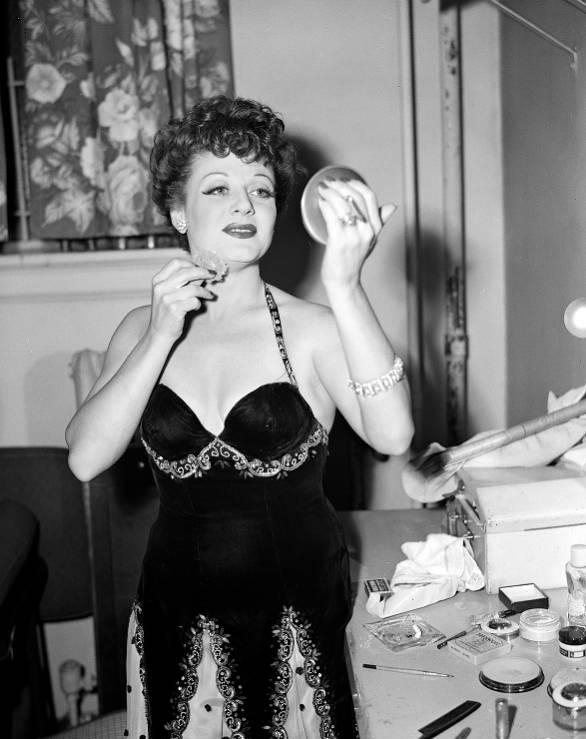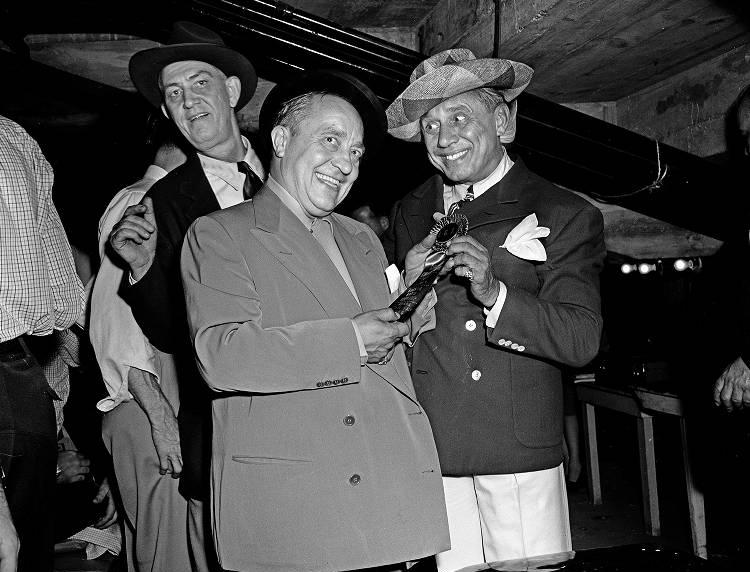The history of vaudeville in Indianapolis parallels that of other cities. Touring shows (circuses, musicals, comedies, melodramas, burlesque shows, varieties, minstrels, and medicine shows) were performed in theaters, tents, beer halls, and saloons as precursors to vaudeville in the city. Even after it was well established in the late 1890s, vaudeville shared the stage with other types of entertainment, especially variety, burlesque, and legitimate theater as well as silent and talking movies.

Long a popular stopping place for performers because it was close to a number of other large cities, Indianapolis offered first-class theaters with luxurious accommodations for audiences and performers alike from the 1870s on. Over the years, the city’s audiences saw vaudeville’s best, including Anna Held, Eva Tanguay, Eddie Cantor, Fannie Brice, the Marx Brothers, and Harry Houdini.
In the 1870s, Indianapolis’ larger — the Grand Opera House, Metropolitan, and Academy of Music—provided both legitimate theater and more popular genres. In spite of the elegant settings, some variety acts were too risqué for local tastes, and, in April 1877, the reported police raids of the Metropolitan.
Variety and burlesque also played in smaller halls, saloons, and gardens, such as the Garden Theatre and Gilmore’s Zoological Garden. Some businesses continued to openly break the 1864 law prohibiting the serving of alcoholic beverages during performances, and the city tried to control these “concert saloons” through licensing.
By the 1880s, there were Sunday performances, and the larger theaters began offering more variety and burlesque to bolster sagging profits. This led to complaints about bawdy entertainment and rude audiences (even though theaters reported record attendance in 1887) and caused the editor of the to threaten to publish the names of disruptive patrons if their demeanor did not improve.
“Dime museums,” including the Park Museum and the Casino Circus and Museum, provided another venue for variety shows in the 1880s. Along with exhibits of dwarfs and wax figures in historic tableaux, patrons could view shows with acrobats, dancers, and animal acts.
As vaudeville came into its own in the 1890s, more touring acts played in the city’s new vaudeville theaters (like the Empire), as well as older legitimate venues such as the . After the turn of the century, “high vaudeville” flourished in Indianapolis, and, by 1912, large theaters devoted to vaudeville included the Colonial, the Washington, the Majestic, and the Lyric. The Colonial opened in 1909 and was the first vaudeville theater in the city to schedule intermissions. “Big time” vaudeville was firmly established in 1910 when the Grand Opera House was bought by the B. F. Keith circuit. It remained a vaudeville house until 1928. Houdini performed at Keith’s in 1911, escaping from a tank of beer provided by the .

The new Lyric, a major vaudeville house also on the Keith circuit, opened on October 14, 1912. Mayor was the first person to speak from the new stage, and a motion picture of patrons entering and exiting the theater was made and shown the following Sunday.
In the 1910s and 1920s, many new theaters built as legitimate theater or movie houses also played vaudeville, including the Murat and Circle theaters. Venues for vaudeville in the 1910s included the air domes—outdoor theaters also known as hippodromes. Between 1909 and 1915, at least 22 of these facilities opened in the city.
The African American vaudeville tradition was also present. Beginning in 1916, the Washington offered the best of the Black vaudeville circuit, and pit band cornetist Frank Clay became known as the “Black Sousa.” The also offered vaudeville and moving pictures.
Some Indianapolis performers became nationally known, including and ragtime composer Russell Smith of the Chocolate Dandies, as well as John “Bubbles” Sublett of the popular Buck and Bubbles. The Charlie Davis band of the Circle and Indiana theaters gained national acclaim, and its singer, Dick Powell, went on to Hollywood. Charles Green’s all-girl band, the Parisian Redheads, took top billing over the Marx Brothers at New York’s Palace Theater in 1929.
Vaudeville ended in Indianapolis, as it did elsewhere, with the arrival of talking pictures and the Great Depression. In the late 1920s, the “vaude-pic” show became common, and large theaters—including Lowes Palace, the Circle, and the new Indiana—offered shortened vaudeville reviews with motion pictures. When the Palace Theater closed in New York in 1932, many considered vaudeville dead, but the transitional vaude-pic show continued in Indianapolis into the 1940s. Most theaters became movie venues, but some continued to offer live big-band shows. A few, like the Colonial and the Majestic, retained the live show component as burlesque.

Help improve this entry
Contribute information, offer corrections, suggest images.
You can also recommend new entries related to this topic.